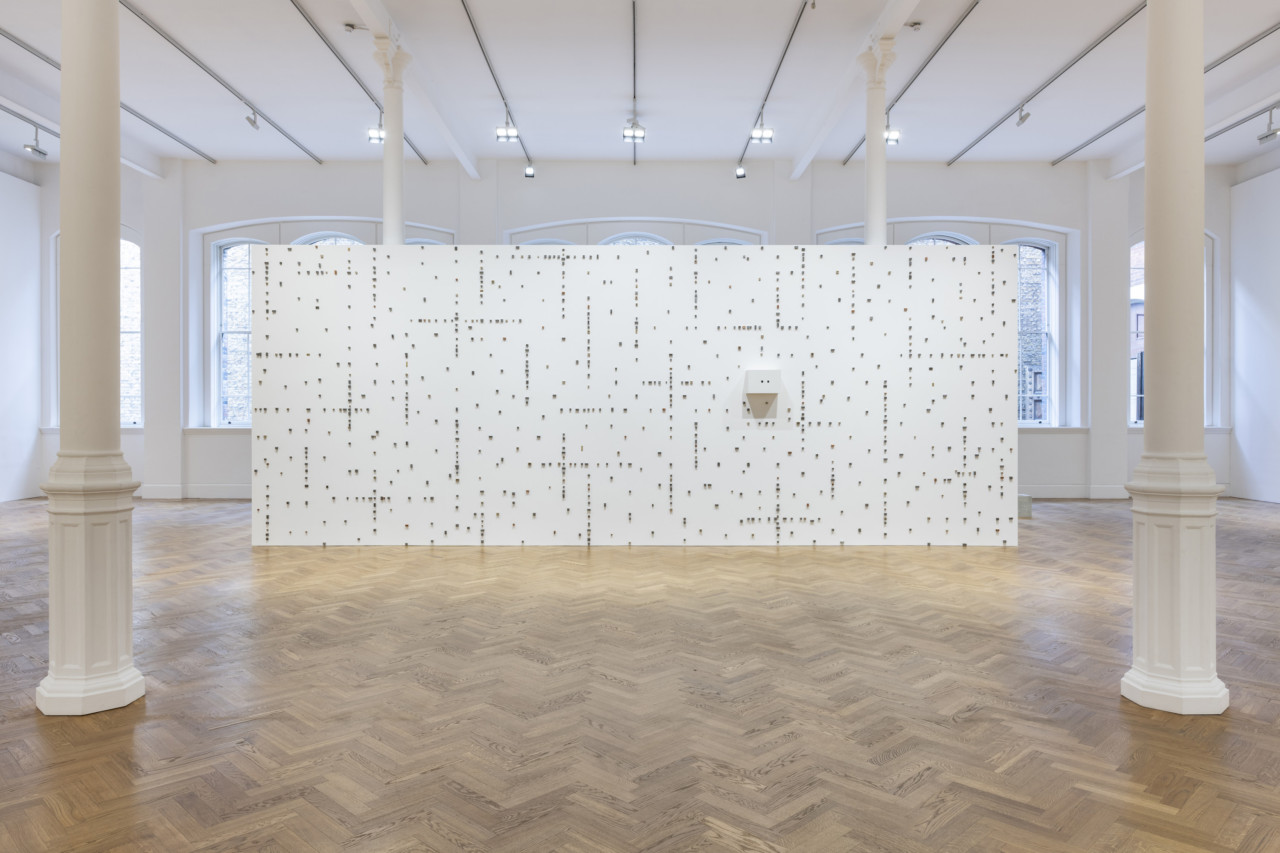


Image: Prabhavathi Meppayil. Photography by Damian Griffiths. Courtesy of the artist and Pace Gallery, London.
Indian art is often associated with vibrant colours and heavy symbolism. Prabhavathi Meppayil’s work, which is currently on view at Pace Gallery London, dispels such expectations: the artist makes work that is rooted in the tradition of minimalism.
Her white meditative paintings bear formal resemblance to the work of Robert Ryman and Agnes Martin, two artists who are also represented by Pace Gallery. Yet, although one could certainly put her work in dialogue with that of these artists, it is worth noting that Mappayil comes from a family of goldsmiths and her practice is in line with this decades’ long tradition, is an amalgamation of traditional craftmanship with modernist concerns.
By reclaiming largely out-of-date and no longer used materials and utensils, such as the thinnam (a kind of chisel that goldsmiths used in India) she confers their lost status and reinstates the dignity of manual artisanal means in artistic production. sb/eighteen, 2018 is an assemblage of 875 small objects such as iron, copper and brass tools on a white wall in the middle of the gallery. Impressive yet discreet, the work alludes to Meppayil’s personal history as a descendant of generations of goldsmiths and to the effort and hard labour it takes to produce something beautiful out of a few generic forms. The three concrete and copper sculptures on display underline her interest in simple structures as vessels of ideas.
The paintings divulge the artist’s concern with materiality and process. On close inspection, the paintings have lines or textures that mildly infect the pureness of the abstract model and create some surface tension. Many of these paintings were made of embedding copper wires in gessoed large-scaled panels, thus allowing chance to creep in and leave its mark on the surface. A material such as copper is mutable: once oxydized, it changes colour and occasionally disappears entirely from sight. This unequivocal embrace of the material’s unique qualities gives Meppayil’s work a temporal element and a transcendental dimension.
The titling of the works follows a system the artist has devised that is non-prescriptive of a specific reading or representational of the work. With respect to the possibilities of the medium and the emotional intelligence of the viewer, this approach encourages individual readings.
Sensual and less austere than the work of some of her Western counterparts, Meppayil’s work is a paean to silence and introspection. Her meditative paintings hint to a withdrawal from the world of images to an esoteric cosmos consisting of potent forms and chance arrangements.
There is an openness and generosity in the work, conveyed through the non-hierarchical way the artist approaches art and craft as well as mysteries of life. The exhibition at Pace Gallery is a wonderful opportunity to view one of the most important contemporary artists from India and to attest that modernism is not a linear history of the West, but one that includes, empowers and unfetters many individual global histories.
Vassilios Doupas
Curator of Programmes
Pace Gallery, 6 Burlington Gardens, Mayfair, London W1S 3ET. Open Tuesday-Saturday 10.00-18.00
Exhibition continues until 25 May 2019. www.pacegallery.com